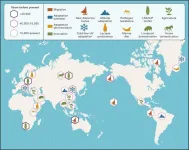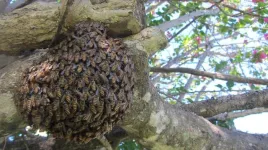By combining interviews with elite college athletes and analysis of data on over 4,000 high school girls, researchers found that socioeconomic status – of families and the school districts in which they live – consistently underlies other factors that foster or obstruct opportunities for girls to play one or more sports and stick with it.
Fifty years after the enactment of Title IX, opportunity for girls and women in sports continues to grow but it is not equal with the opportunity provided to boys and men. Although the number of girls playing high school sports has risen from 300,000 to over 3 million, there remains about a 10-percentage-point difference between girls’ and boys’ participation rates.
Yet opportunities also aren’t equal among girls, researchers say, meaning especially girls of color, from lower social class families, and attending schools in lower-income neighborhoods are potentially denied some of the social, educational and professional rewards linked to playing sports, such as being seen as a talented person, a team player or a hard worker.
“It’s important to recognize that school sport participation isn’t created in a vacuum and just linked to merit, hard work, persistence and discipline, but is linked to parenting practices and racial and socioeconomic status dynamics, including segregated settings and assumptions of choice and efforts put forth that can drive different trajectories,” said senior author Chris Knoester, professor of sociology at The Ohio State University. “Social factors matter, and do so differentially.”
The research was published online Feb. 20 in the journal Sociological Focus.
For this study, Knoester and colleagues sought to determine which girls get chances to play which types of sports and for how long, and the impact that structural factors like race, class and gender have on those opportunities.
First author Kirsten Hextrum, assistant professor of language, culture and society at Oregon State University, conducted extensive interviews with 47 track and field athletes and rowers, 28 of whom were women, to unearth the factors that enabled them to achieve their elite status in college.
Clear themes emerged. Parents of higher socioeconomic status living in wealthy communities took a very active role in making sports a defining part of their children’s lives before the kids started kindergarten, and access to many different sports growing up made it easier for these young athletes to continue participating.
The specter of male superiority permeated the athletic environment despite expectations that gender segregation would empower and protect young women. White, suburban areas offered more sports than lower-income and racially diverse communities, and girls of color who grew up in affluent neighborhoods still felt they were pushed toward certain sports, like track and field, or were treated like tokens on their teams.
These combined class, gender and race factors suggested that simply opting in to sports and then freely picking the best fit wasn’t available to all girls.
“We’re challenging this notion that athletic performance is driven by an individual’s choice,” Hextrum said. “We’ve identified mechanisms through which the routing of opportunity occurs.”
The influence of social class, race and gender on sports opportunities for girls were borne out by statistical analysis of Educational Longitudinal Study data on 4,271 girls from 559 U.S. schools who attended 10th to 12th grade from 2002-2004. The analysis also included data on school size; numbers and demographic data on students who participated in sports; sports offered; and, as an indicator of the socioeconomic status of the school, the percentage of students eligible for free or reduced-price lunches.
Results showed that at the individual level, white girls in high school were more likely than girls of color to play any school sports. At the school level, attending a school with a greater proportion of white students was positively associated with the likelihood of a girl playing a school sport and playing it consistently.
Social class of schools and families was an underlying factor in many of these dynamics. For example, regardless of the racial makeup of the student body or the school’s size, a 25% increase in the percentage of low-income students was associated with a 20% drop in the odds of girls’ sports participation.
Higher family socioeconomic status increased the likelihood of girls playing most sports in 10th grade and playing until their senior year, and the odds of a girl from a family with high socioeconomic status participating in any school sport were 50% higher than the odds for a girl from a family of average socioeconomic status getting into a sport.
Further, smaller school size was linked to greater sports participation by girls, and a larger number of sports offered by a school was positively associated with the likelihood of girls playing sports.
Some of these findings are familiar to the team. Co-author James Tompsett, a PhD student in sociology at Ohio State, led a study in 2021 that found high school athletes were much more likely to play sports in college if they came from higher-income families and attended wealthier schools. He noted that this new study showed family wealth enabled kids to start young at playing all kinds of different sports, giving them a leg up on finding where their true strength lies.
“Multisport athletes are so much more likely to continue participating and persisting in sport – it’s not just a matter of specializing,” Tompsett said. “Folks thrown into everything have the chance to potentially specialize in something that will take them to the next level, give them the benefits they’re looking for, like getting into a specific school or program that they want.”
The disparity in girls’ access to the health and social advantages associated with participation in sports points to the need for investment in making sports opportunities available to all people throughout the life course, Knoester said.
“There should be careful scrutiny of rewarding school sport participation in educational and work institutions,” he said. “The proposed solution to addressing this is not to get rid of sports, but to recognize there are some wonderful things that do come out of sport experiences – but we need to be mindful and careful in providing more positive and more low-cost sport opportunities.”
#
Contacts:
Chris Knoester, Knoester.1@osu.edu
Kirsten Hextrum, kirsten.hextrum@oregonstate.edu
James Tompsett, jamesatompsett@gmail.com
Written by Emily Caldwell, Caldwell.151@osu.edu; 614-292-8152
END


